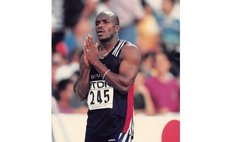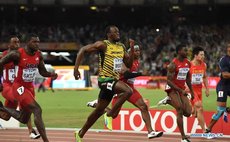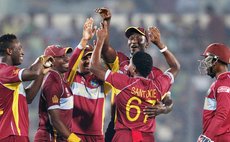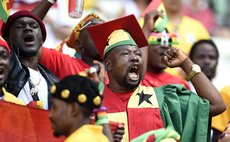Raison d' être
Recent clamor by legends of Caribbean Cricket for a disbanding of the West Indies Cricket Board is adamant that the board – at least in its current and persistent state – does not serve a useful purpose. It has been in existence for about ninety years, having been seen during its first half century as largely ornamental. West Indies performed internationally on the clear basis of excellence, or otherwise, of one or two or a few individuals. Thus, the Jamaican George Headley for the most part carried our batting on his shoulders between the formative years 1930 to 1939. He stood as a colossus with outstanding figures during five series against England and Australia: 703 aggregate for an average of 87.87; 336 for average of 37.33, 577 for average of 55.46; 485 for average of 97.06 and 334 for average of 66.80. All told, Headley's total in his 22 Tests was 2190 with an average of 60.83 and 10 centuries in his 40 innings. His career average betters that of all other West Indians in Tests.
Headley's mantle of preeminence was adopted by the W's Worrell, Weekes and Walcott who between them notched up 12, 113 runs in Tests between the years 1948 and 1958, with Worrell's contribution extending to the year 1963 in a protracted tenure in the team captaincy. Gary Sobers posed as the major luminary between 1954 to 1974. His 93 Tests yielded 8032 runs at an average of 57.78 and 26 centuries. Then Viv Richards blasted 8540 runs and 24 centuries in his 121 Test averaging 50.26. Brian Lara is of more recent vintage stretching from 1991 to 2002.
Very clearly there was a relatively unbroken chain in the West Indies of world topping Test batsmen – Headley 1930-1939, the W's 1948-1958, Sobers 1954-1974, Richards 1974-1992 and Lara 1991-2002. Note, of course, the gap between Headley and the W's occasioned by the Second World War (1939-1945).
Major eras in West Indies successes depended on the bowling of Ramadhin and Valentine and later Gibbs (spin), Hall and Griffith (pace) serving as notable forerunners of Roberts, Holding, Walsh, Marshall, Ambrose, Garner etc. The latter group made West Indies the indomitable force placing us at the pinnacle of world cricket for close to twenty years.
At no time could one say the W.I.C.B was in any way responsible for the success enjoyed by the West Indies team. The board in essence was little more than ornamental and not really instrumental in our achievements. A team was selected and the players did the rest. The huge question is: why was the trend of success interrupted? What might have been done and necessary- to prevent the abominable decline in the West Indies internationally?
We are at the bottom of the international cricket ladder when it comes to the quantitative level of resources. In respect of population we are last – behind India 900 million, Pakistan 140 million, Bangladesh 110 million, England 50 million, South Africa 40 million, Sri Lanka 20 million, Australia 19 million, Zimbabwe 12 million, and New Zealand 7 million. We are only about 6 million people. Our financial resources are slender in the extreme.
Where we need to arrive at a maximization of the little human resources at our disposal inevitably has to do with whatever we do with our players. They are our main assets apart from a beautiful climate. The fact that we have lagged so long in coming up with stellar performers is ample proof of our not having mobilized the technical overview needed to keep us on the required trajectory of performance.
It would seem that successive administrative boards have been not much more than the outcome of repeated shuffling of cards. The pack is too full of faceless cards, with aces, kings and queens almost entirely out of circulation. The very same seems to hold true for the Caribbean territorial boards. Otherwise, the upsurge of individual territories standing out head and shoulders above their counterparts would not be the rarity now existing. In years of yore it was a matter of the good and the better. Now it is more specifically the bad and the worse with the quality of our cricket.
The competitive life of an élite player spans five years to fifteen years. His usefulness ought to stretch very well beyond this. So, a player retiring from Test cricket at between 28 and 36 years of age should have as much as another 20 to 40 years in which he could usefully devote himself to the betterment of cricket, whether it is with inspiring our youth cricket, senior cricket or cricket administration.
More than anything else, it is vital to define clearly whose West Indies cricket it is as far as the clientele goes, and who is morally entitled to oversee it. From a semi detached perspective it is evident that people get into cricket administration as opportunists eager to jump on a band wagon. They harbor the notion of players not equipped with intelligence or administrative or business sense. To this extent our cricket is doomed unless this outlook is dispelled, and the sooner the better.
A leading official of the West Indies board rather blithely mouthed the argument that the board's concern was not exactly that of showing players how to hold a bat. I would advise her that more than figuratively this is exactly the major concern on which all success rests! I have not heard of the board ever embarking on a technical discourse outlining the failings at any given time with our cricket, and attempting to put in place measures to address the revealed deficiencies.
In this area of dealing with concern about our cricket, I would envisage a magnificent place for quite a number of the cricket legends. These men – along with many who have never been legendary but who are ultimate in their thinking on the game should be utilized for their resourcefulness, something quite irreplaceable. But first, our board must purge itself of the weakness enslaving the mentality of individual territorial governments that they hold themselves as the sole repositories of knowledge, and any condescending to admit advice from outside as a sign of depravity. It may take time, too, for the board to embrace the formation of a wider consultative body numbering about one thousand drawn up regionally to assist in forestalling a high measure of the total folly besetting the sport we love. Without this, the legends are completely right.




